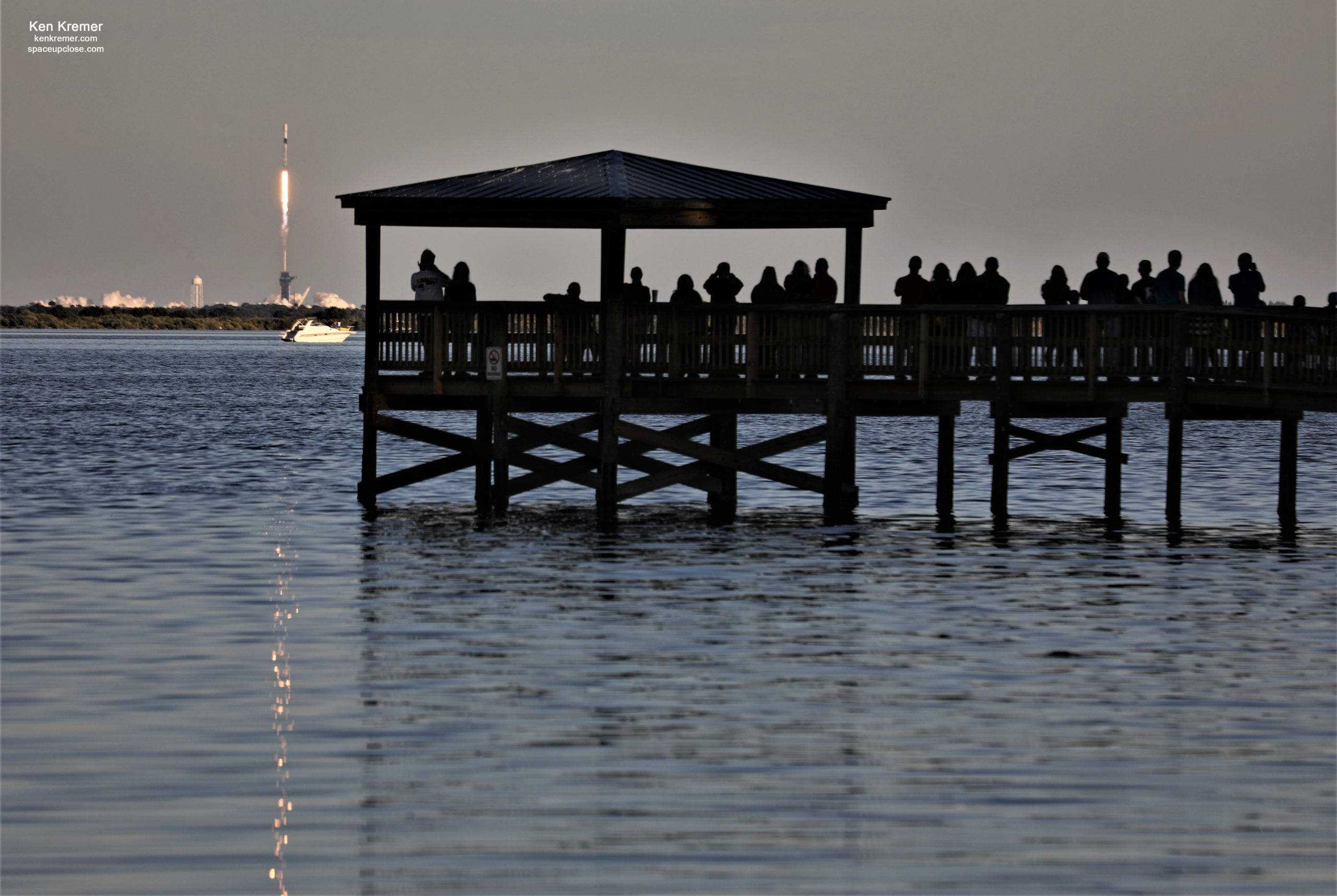
For SpaceUpClose.com & RocketSTEM
TITUSVILLE, FL – A recycled SpaceX Falcon 9 rocket successfully lifted off late Thursday afternoon, Jan. 6, on another Starlink mission marking the first Space Coast launch of 2022 and delivered the next batch of 49 high speed broadband internet satellites to low Earth orbit under nearly cloud free clear blue skies.
The now 4x flown Falcon 9 booster also nailed the soft landing on an ocean-going droneship eight minutes later.
Starlink also kicks off as many as 7 planned launches in January by SpaceX, ULA and startup Astra
Large crowds gathered around the Space Coast region to watch the conveniently timed and rather rare daylight launch just before sunset and dinnertime that went off without a hitch under serene weather conditions.
Blastoff of the ‘flight-proven’ SpaceX Falcon 9 on the Starlink 4-5 mission took place right on time exactly at 4:49 p.m. EST (2149 GMT), Jan. 6, from Launch Complex-39A on NASA’s Kennedy Space Center in Florida during an instantaneous launch window.
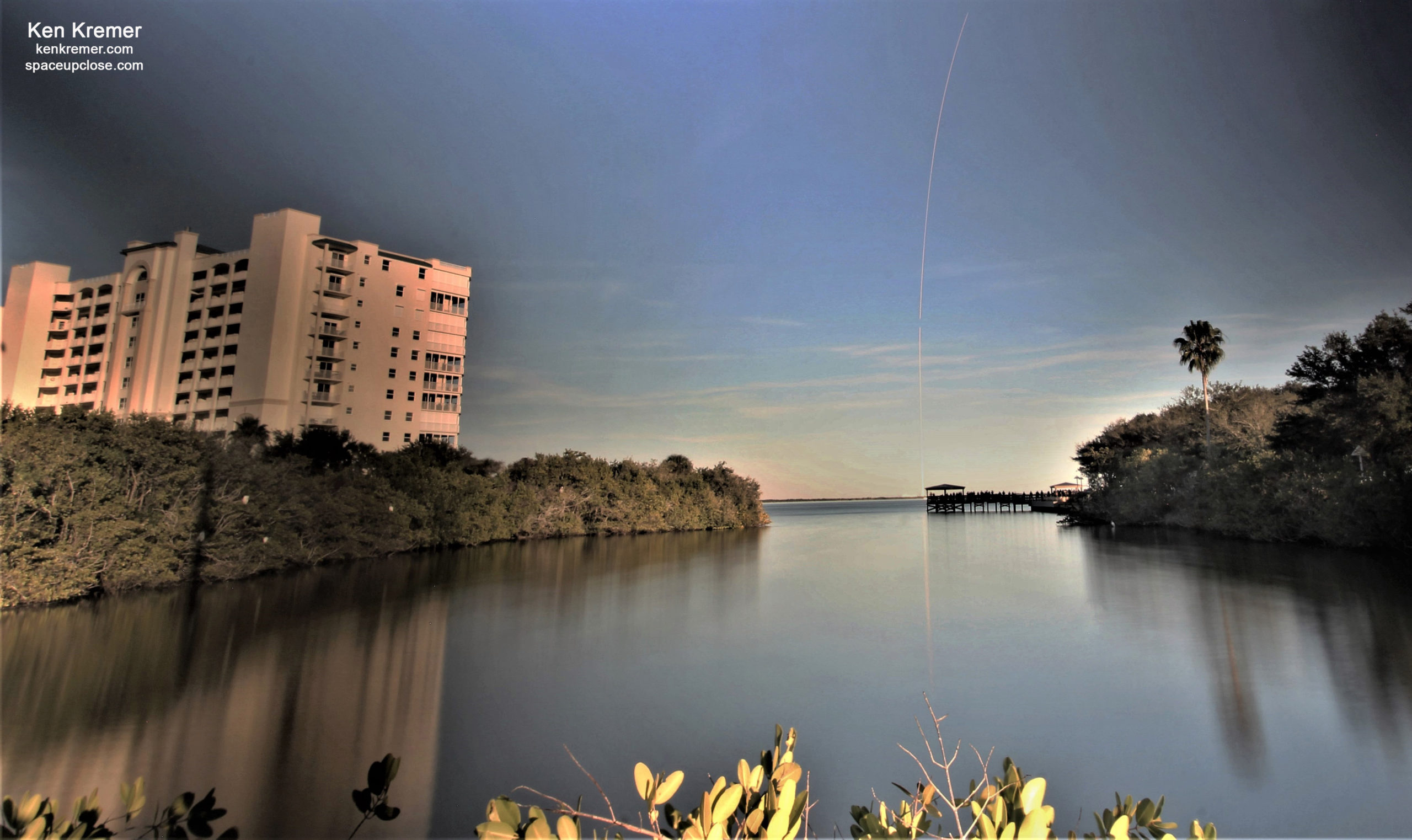
The 229 foot tall (70 meters) Falcon 9 lifted off with 1.7 million pounds of thrust generated by 9 Merlin main engines fueled by RP-1 kerosene and liquid oxygen propellants.
Falcon 9 flew away and aloft on a rare southerly trajectory heading southeast and just north of the Bahamas at an inclination of 53.2 degrees into the second of five Starlink orbital ‘shells’ at different inclinations
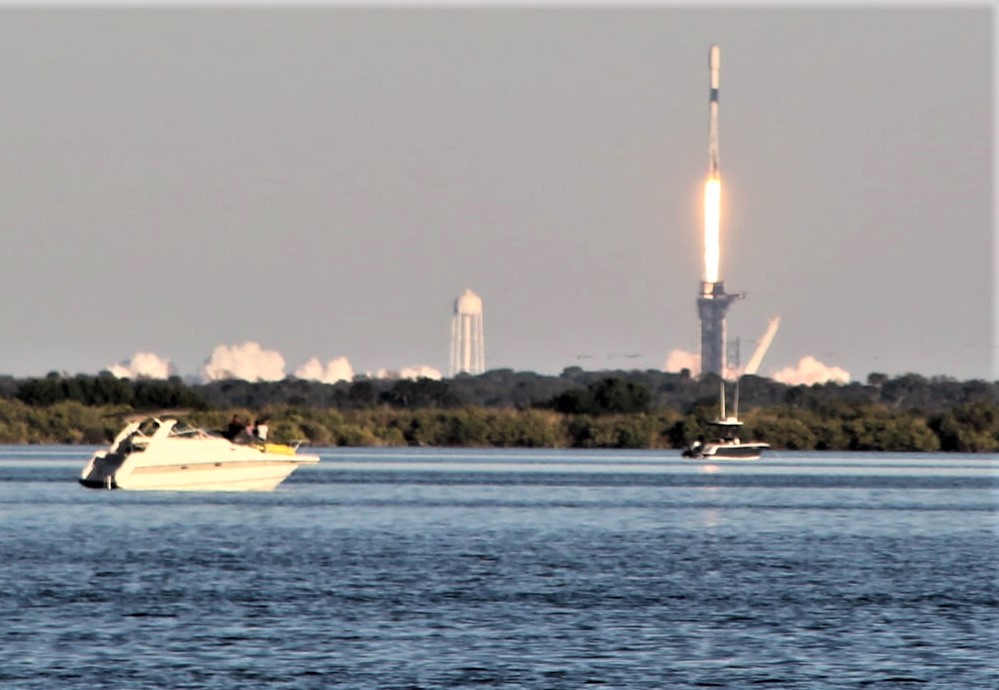
The payload comprised 49 upgraded Starlink internet communications satellites manufactured by SpaceX in their Redmond, Washington production facility – enlarging the existing and burgeoning broadband constellation to nearly 2000 launched thus far.
The goal of SpaceX’s Starlink constellation is to provide low cost, high-speed, low-latency broadband connectivity around the world.
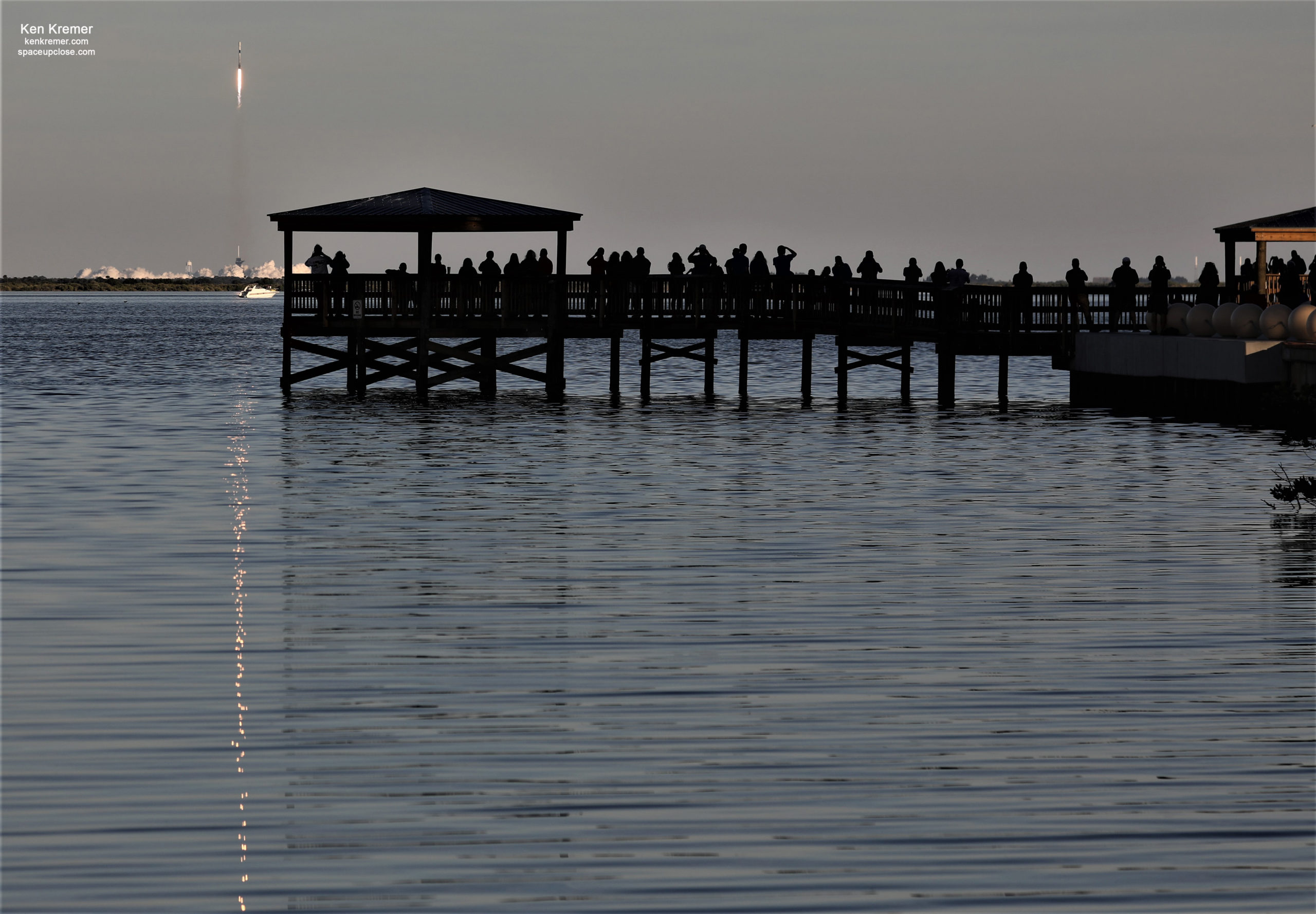
This was the fourth launch and landing of this Falcon 9 first stage booster designated as B1062, which previously launched GPS III-4, GPS III-5, and the first all civilian human spaceflight mission on Inspiration4.
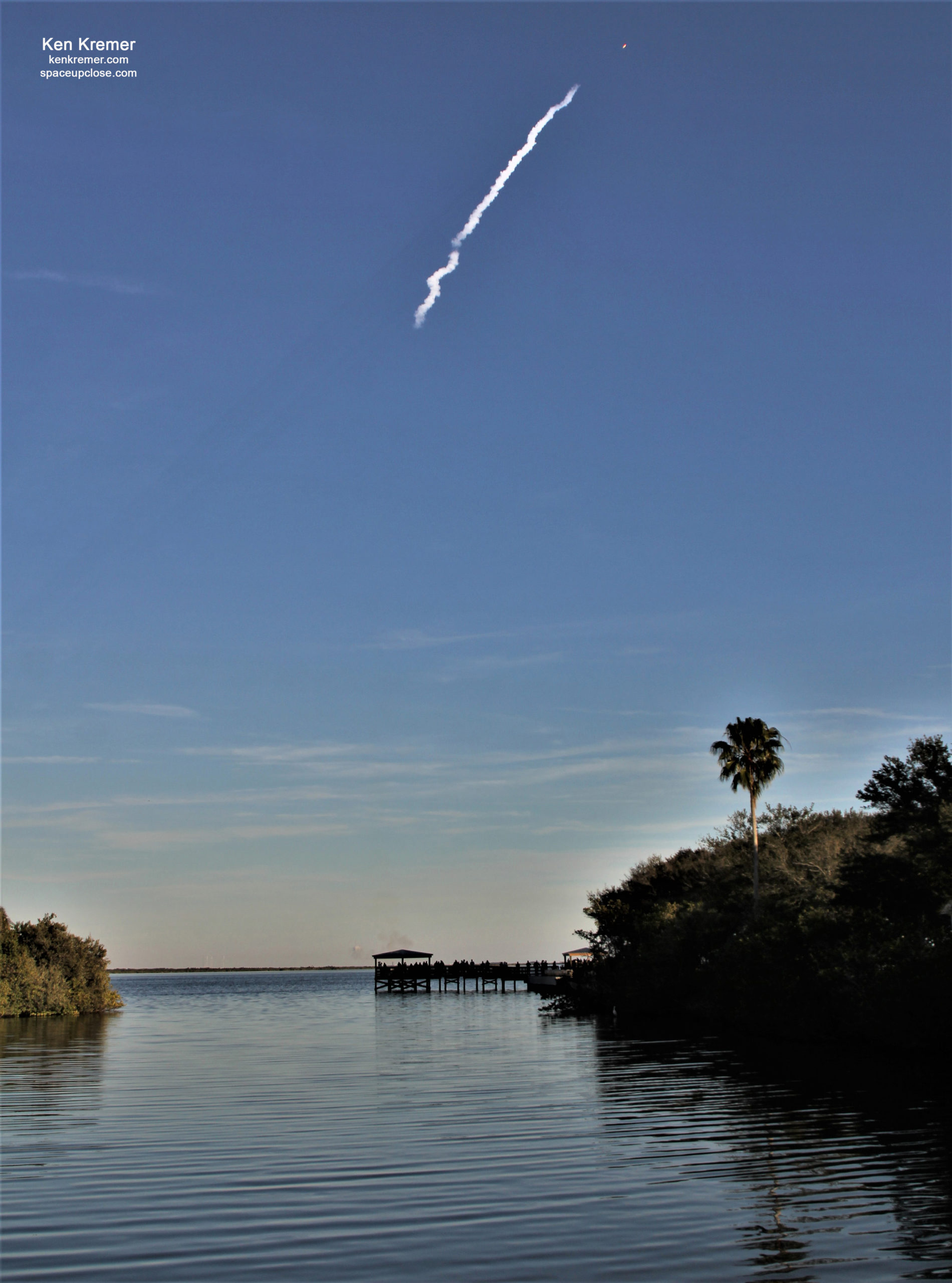
Thursday’s launch was the 3rd for the upgraded Starlinks from the Space Coast following the 4-1 and 4-3 missions with 53 and 48 internet sats launched on Nov. 13 and Dec. 2 – see our earlier stories and photos.
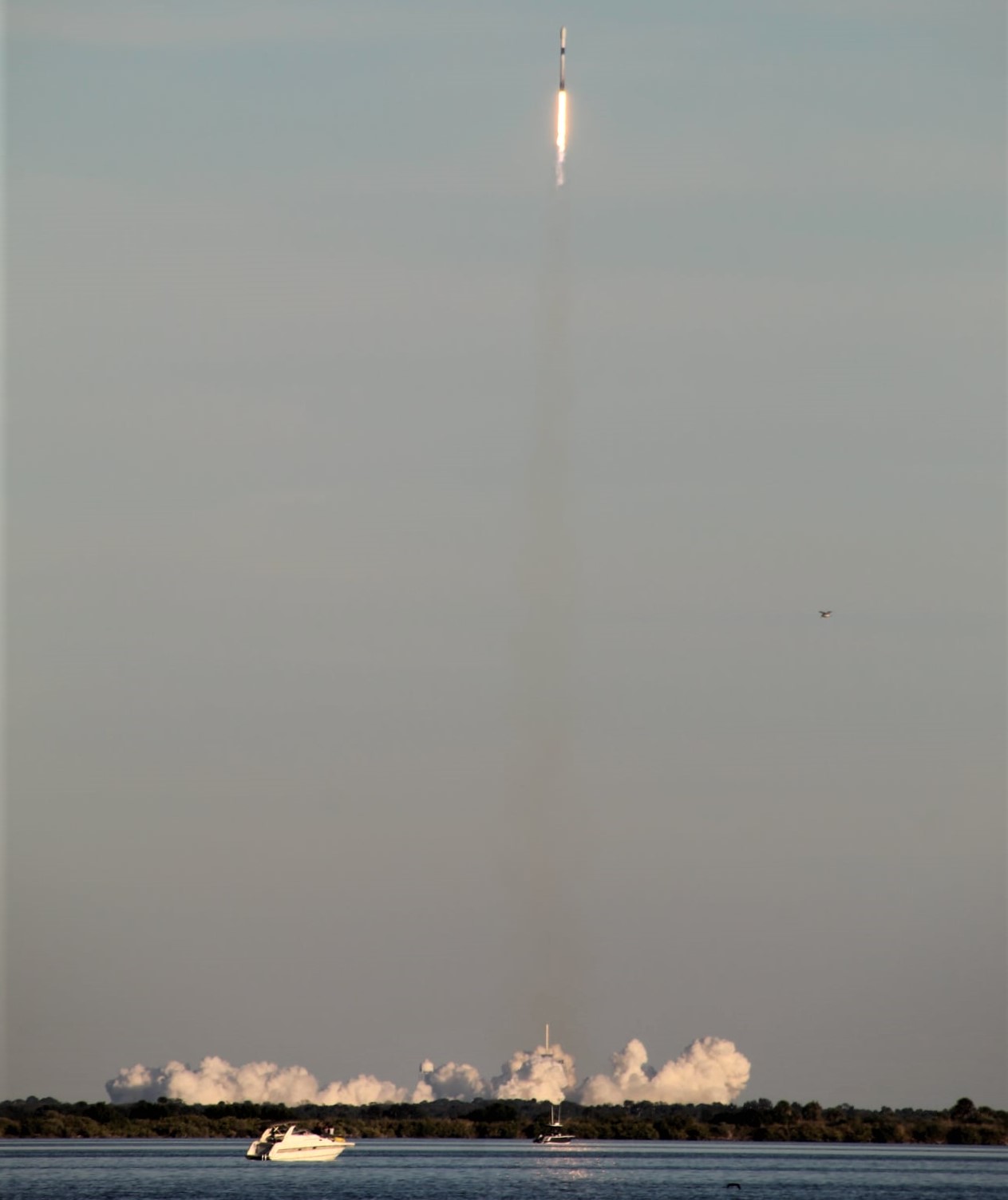
Enjoy our Starlink 4-5 mission launch photos from the Space UpClose team of Ken Kremer and Jean Wright.
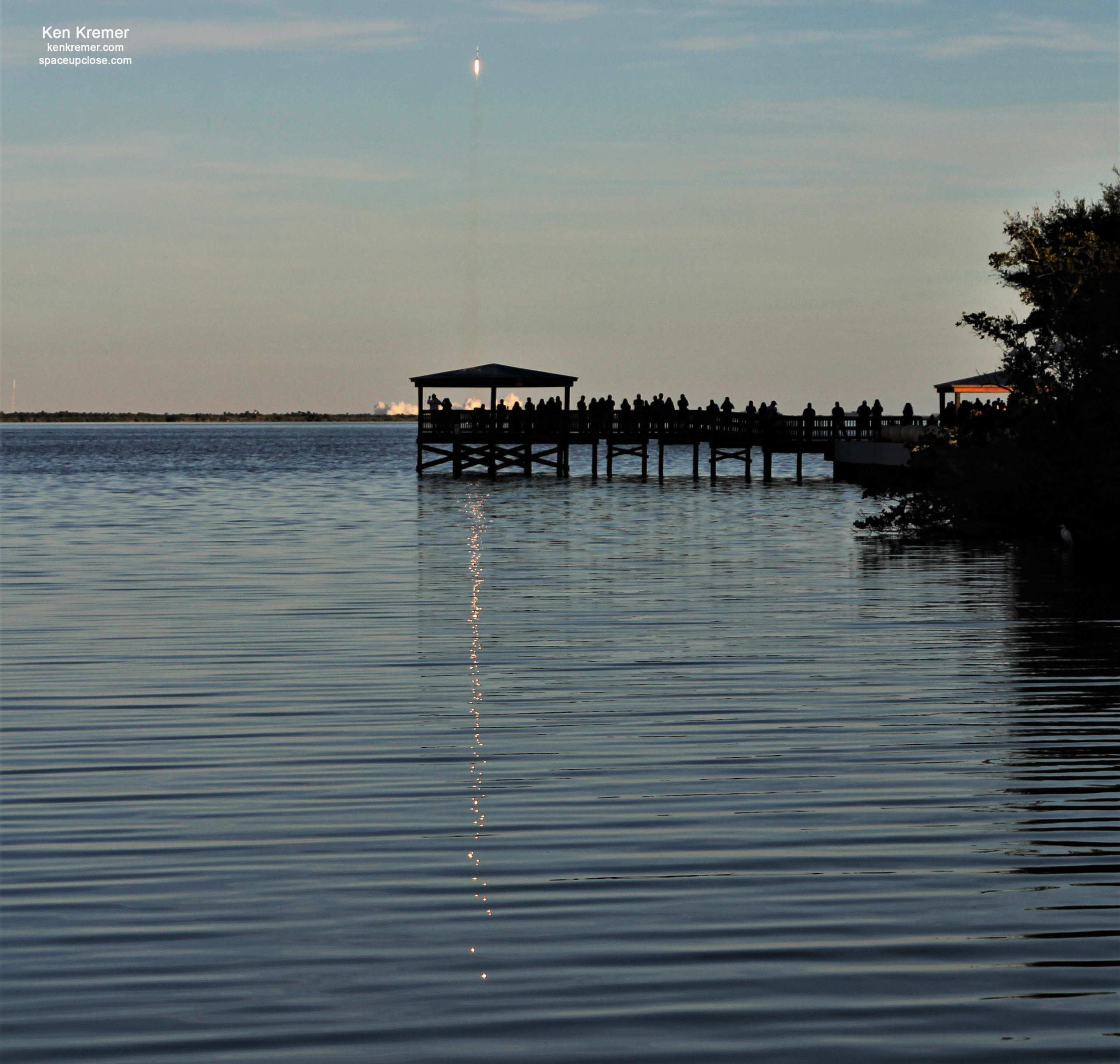
The Starlink satellites were deployed as planned 1 hour and 15 minutes after liftoff into a preliminary orbital altitude ranging between 134 miles and 210 miles (210 kilometers and 339 kilometers).
The solar powered satellites will next unfurl their solar arrays and fire up their krypton ion engine thrusters to raise the altitude to an operational orbit of about 335 miles (540 kilometers).
Deployment of 49 Starlink satellites confirmed
— SpaceX (@SpaceX) January 6, 2022
The Starlink 4-5 mission counts as SpaceX’s 34th dedicated launch with Starlink satellites.
To date SpaceX has now launched 1,993 Starlink satellites to orbit.
But not all remain in orbit and a bunch have been deorbited for a variety of reasons including out of date technology, technological failures, and testing.
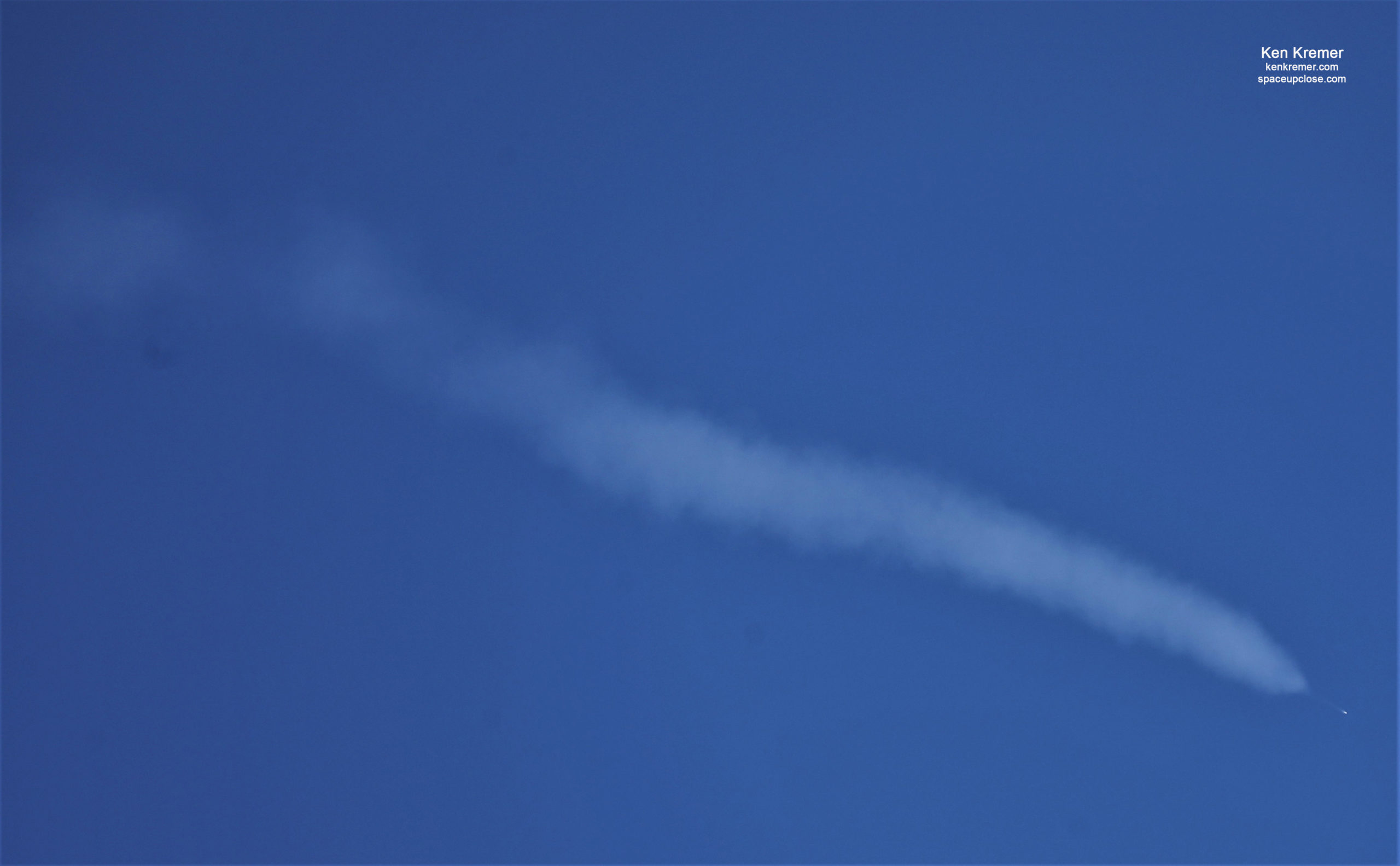
The Starlink 4-5 mission counts as SpaceX’s 34th dedicated launch with Starlink satellites.
The Falcon 9 booster B1062 completed its 4th trip to space and back with a landing on the ASOG droneship – A Shortfall of Gravitas – off the coast of the Bahamas some eight and a half minutes after liftoff
Falcon 9’s first stage has landed on the A Shortfall of Gravitas droneship
— SpaceX (@SpaceX) January 6, 2022
The two payload fairing halves were also reused for the fourth and fifth time saving an enormous amount of money – just like reusing the first stage boosters.
The SpaceX recovery fleet will attempt to recover the fairing halves again also.
Normally launches from Kennedy and the Cape avoid the southerly trajectory to avoid populated areas and prevent polar launches.
However, improvements in rocket manevering technology and innovation by SpaceX has enabled the use of the southern corridor and south polar launches favored for science and some surveillance missions because they provide a different global view of Earth.
The first southerly launch from the Cape involved Saocomm in 2019 and they have flown two more since then
The southeasterly route is also more favorable for booster landings and fairing recoveries in the winter months says SpaceX compared to the harsher weather off the Carolina’s coast
This year 2022 will see even more south polar launches than ever before and feature five just in January, according to a statement from the U.S Space Force.
“The 2022 launch pace is going to be exceptionally busy with up to five polar, and seven total launches, projected for the month of January alone. While three polar missions successfully launched in the past year and a half, Cape Canaveral has never had five southern trajectory launches in a single month,” said Maj. Jonathan Szul, Director of Operations, 1st Range Operations Squadron at CCSFS.
“Due to the unique southerly trajectories, there will be a larger potential impact to air and sea traffic along the southeast coast of Florida. We ask that all pilots and mariners double-check their Notices to Airmen (NOTAM) and Notices to Mariners (NOTMAR) to ensure they are fully aware of all pending launch activities in this historic month on the Space Coast.”
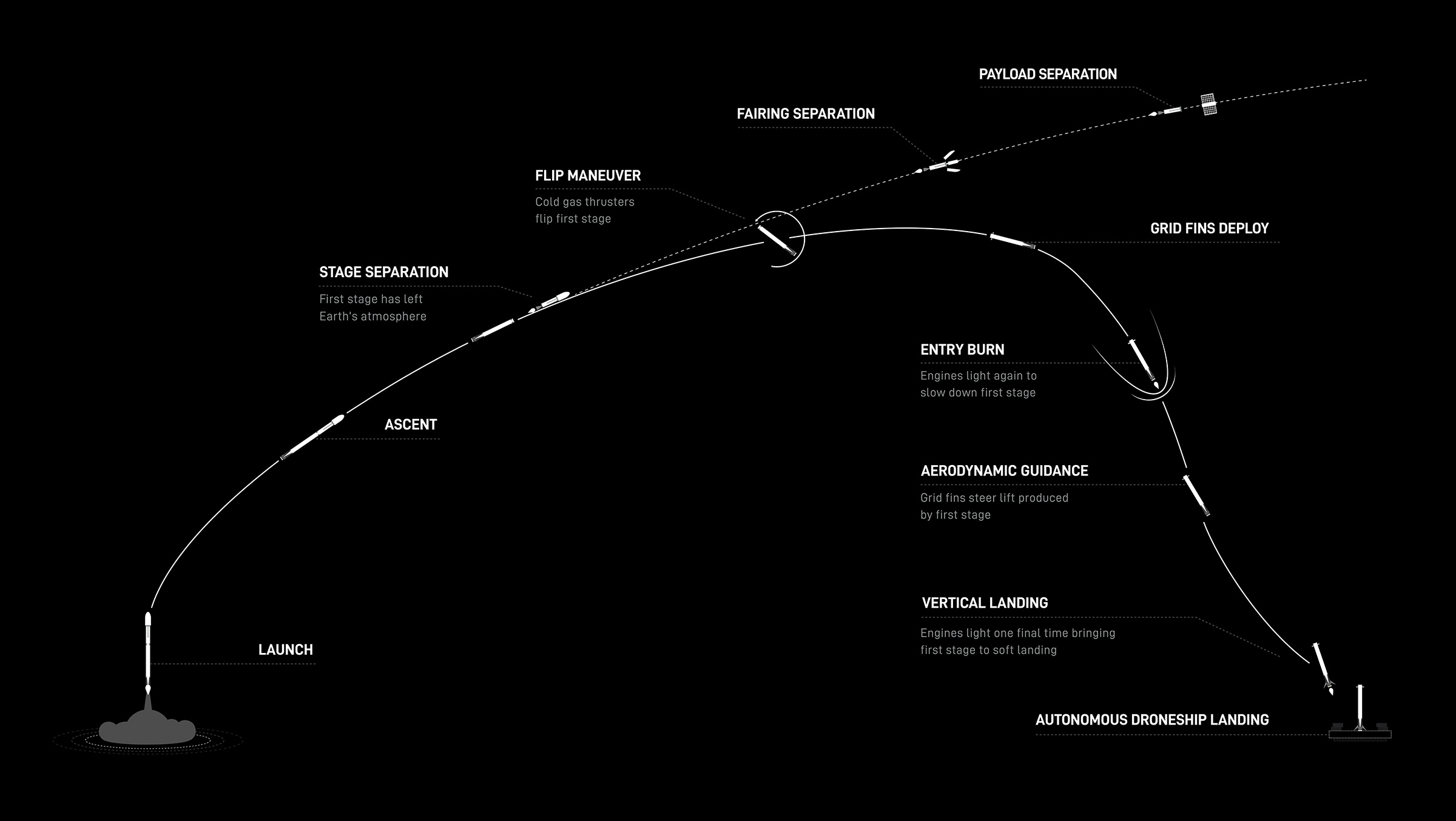
Last year 2021 was a record-breaking year of 31 launches by SpaceX and ULA from the Space Coast and another launch record breaker is expected in 2022.
Liftoff video from SpaceX:
Liftoff! pic.twitter.com/UKW3ab4vai
— SpaceX (@SpaceX) January 6, 2022
Ken’s prelaunch commentary about Starlink and What’s Ahead for NASA human ans science missions and Florida Space Coast were featured on Fox 35 News Orlando and WFTV ABC 9 Orlando TV News
https://www.fox35orlando.com/news/spacex-preparing-for-first-starlink-launch-of-2022-how-to-watch
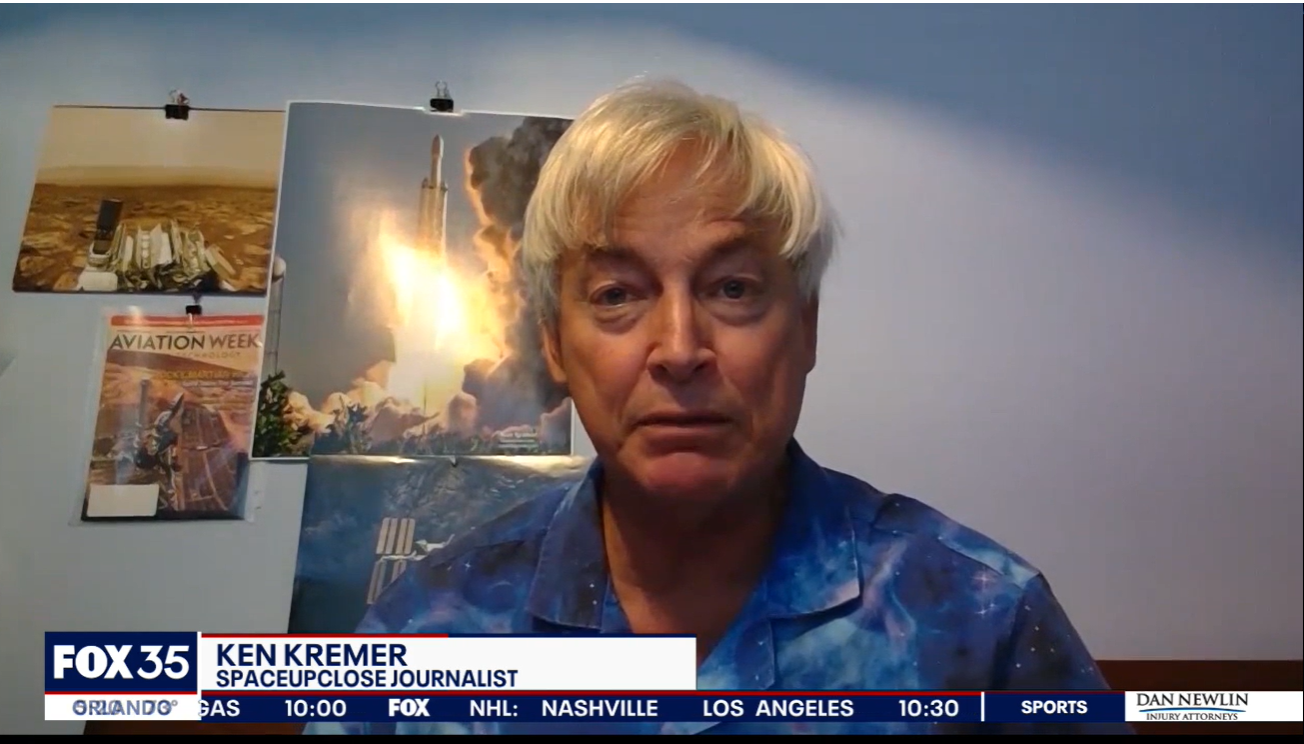

Watch Ken’s continuing reports about SpaceX Starlink , SpaceX Crew and Cargo Dragons, Artemis, SLS, Orion and NASA missions, DART, Lucy Asteroid mission, Blue Origin and Space Tourism, Commercial Crew and Starliner and Crew Dragon and onsite for live reporting of upcoming and recent SpaceX and ULA launches including Crew 1 & 2 & 3, ISS, Solar Orbiter, Mars 2020 Perseverance and Curiosity rovers, NRO spysats and national security missions and more at the Kennedy Space Center and Cape Canaveral Space Force Station.
Stay tuned here for Ken’s continuing Earth and Planetary science and human spaceflight news: www.kenkremer.com –www.spaceupclose.com – twitter @ken_kremer – email: ken at kenkremer.com
Dr. Kremer is a research scientist and journalist based in the KSC area, active in outreach and interviewed regularly on TV and radio about space topics.
………….
Ken’s photos are for sale and he is available for lectures and outreach events
Please consider supporting Ken’s work by purchasing his photos and/or donating at Patreon:
https://www.patreon.com/kenkremer
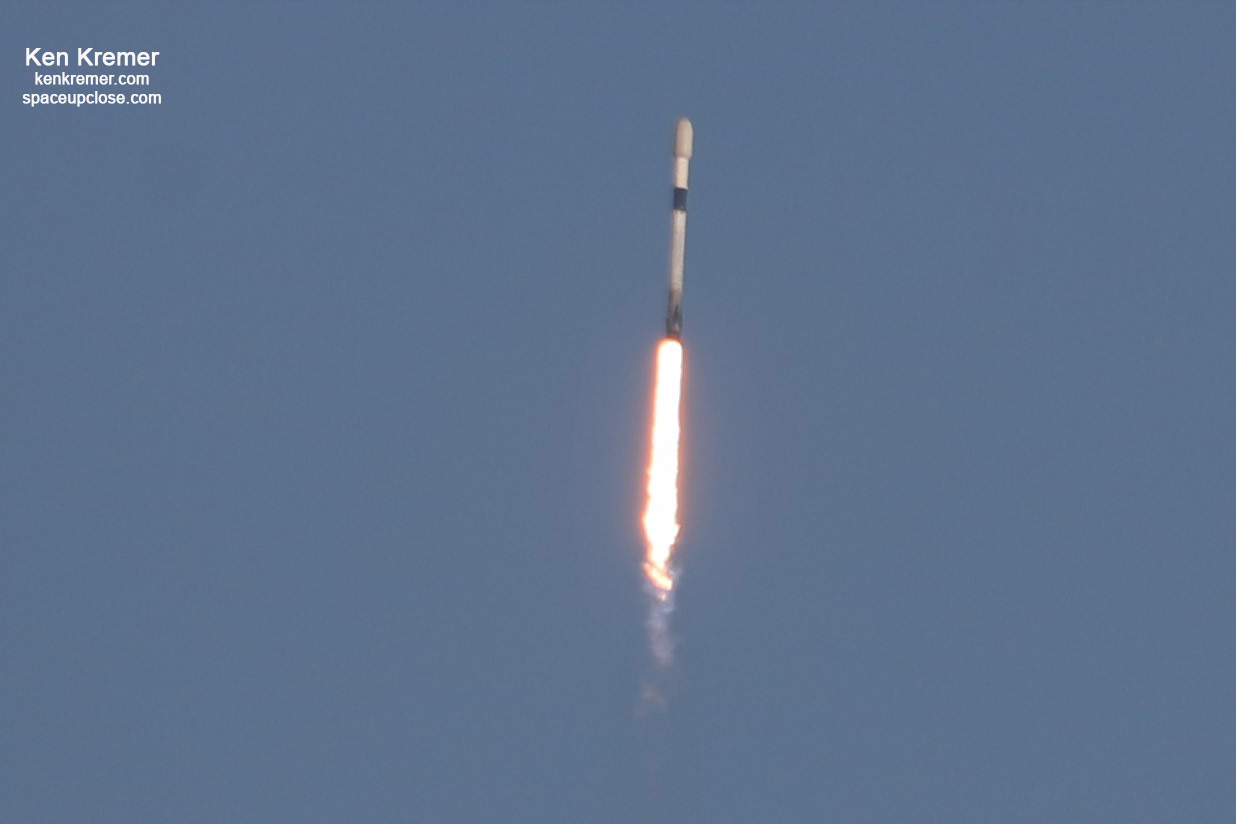
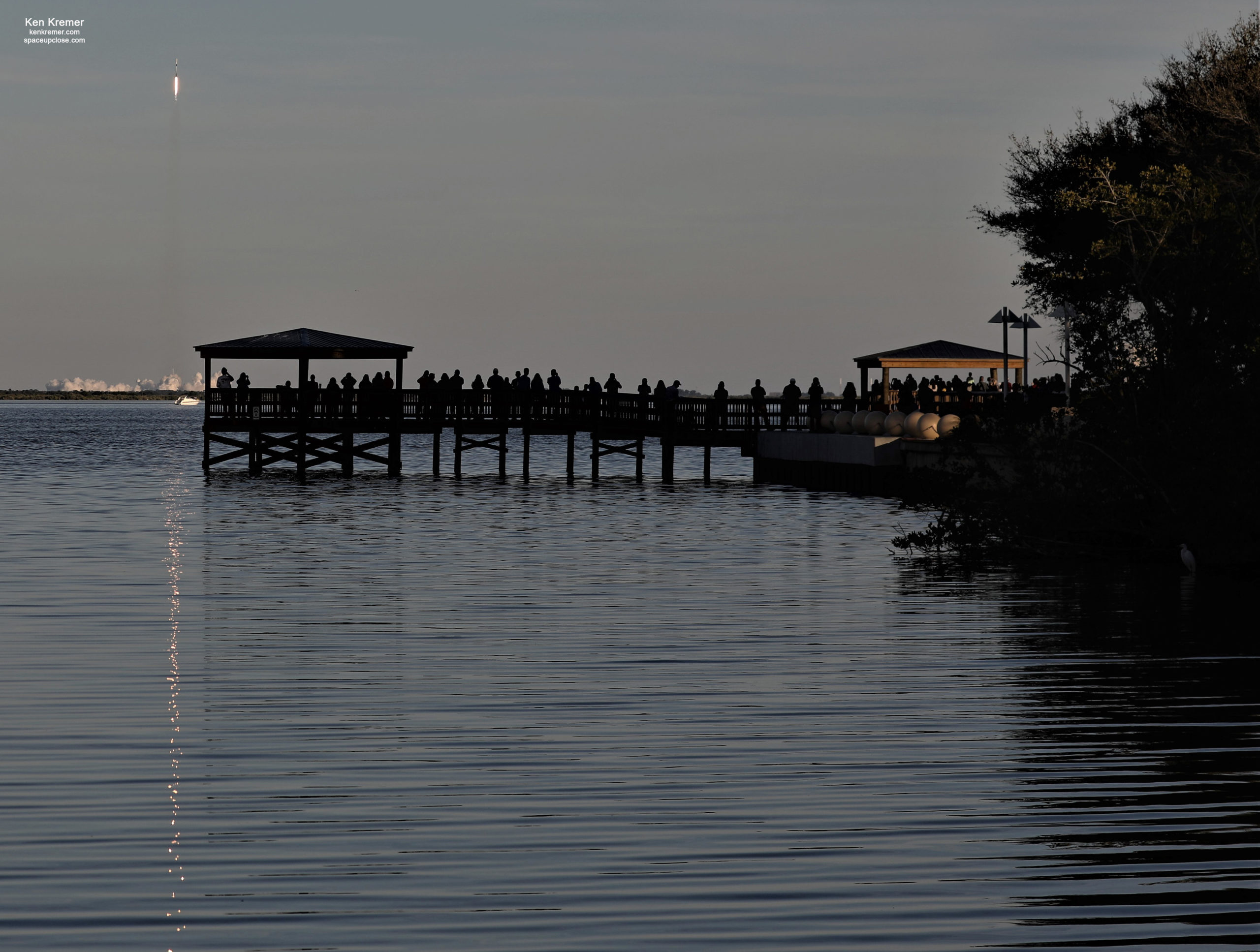
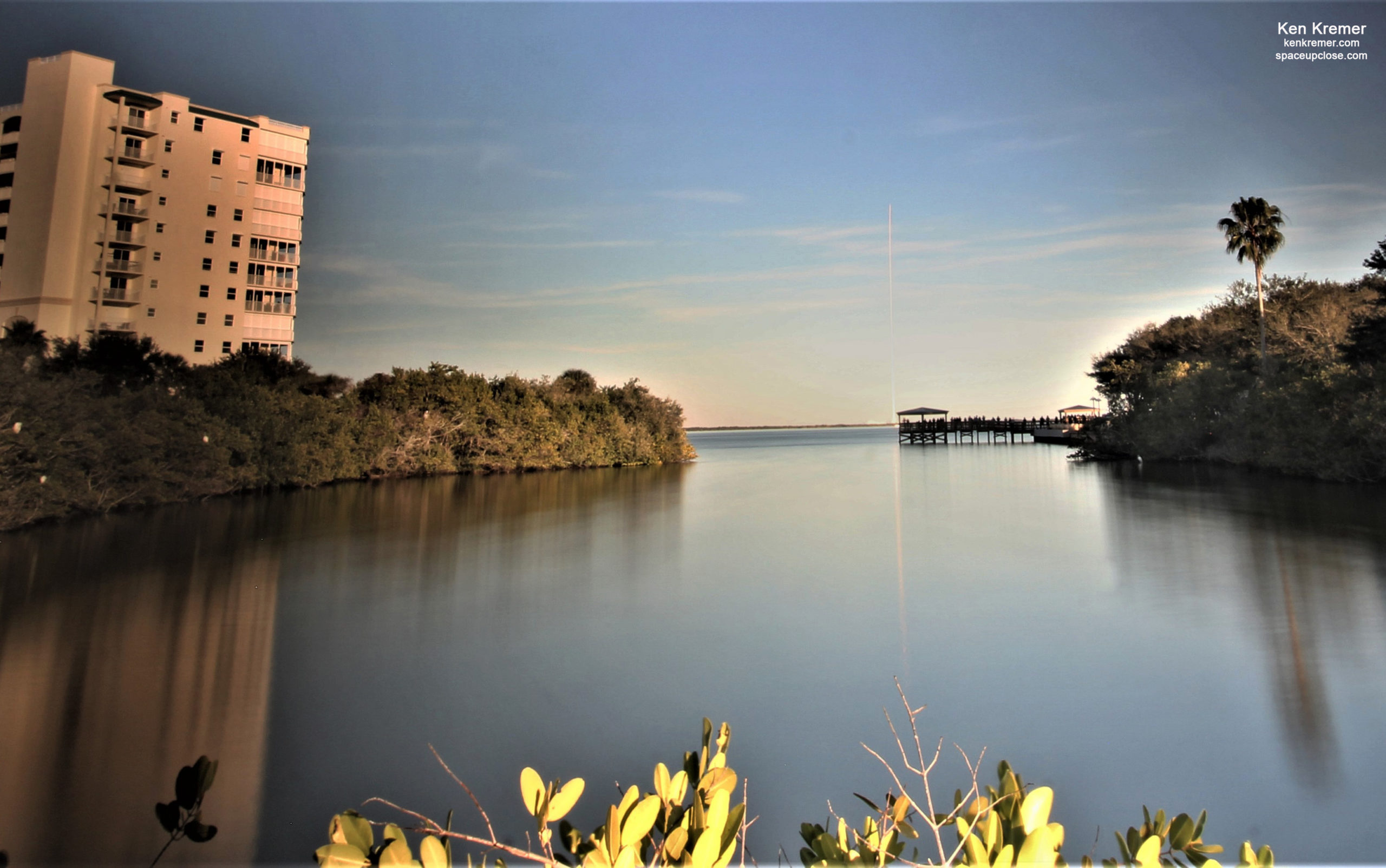
x



